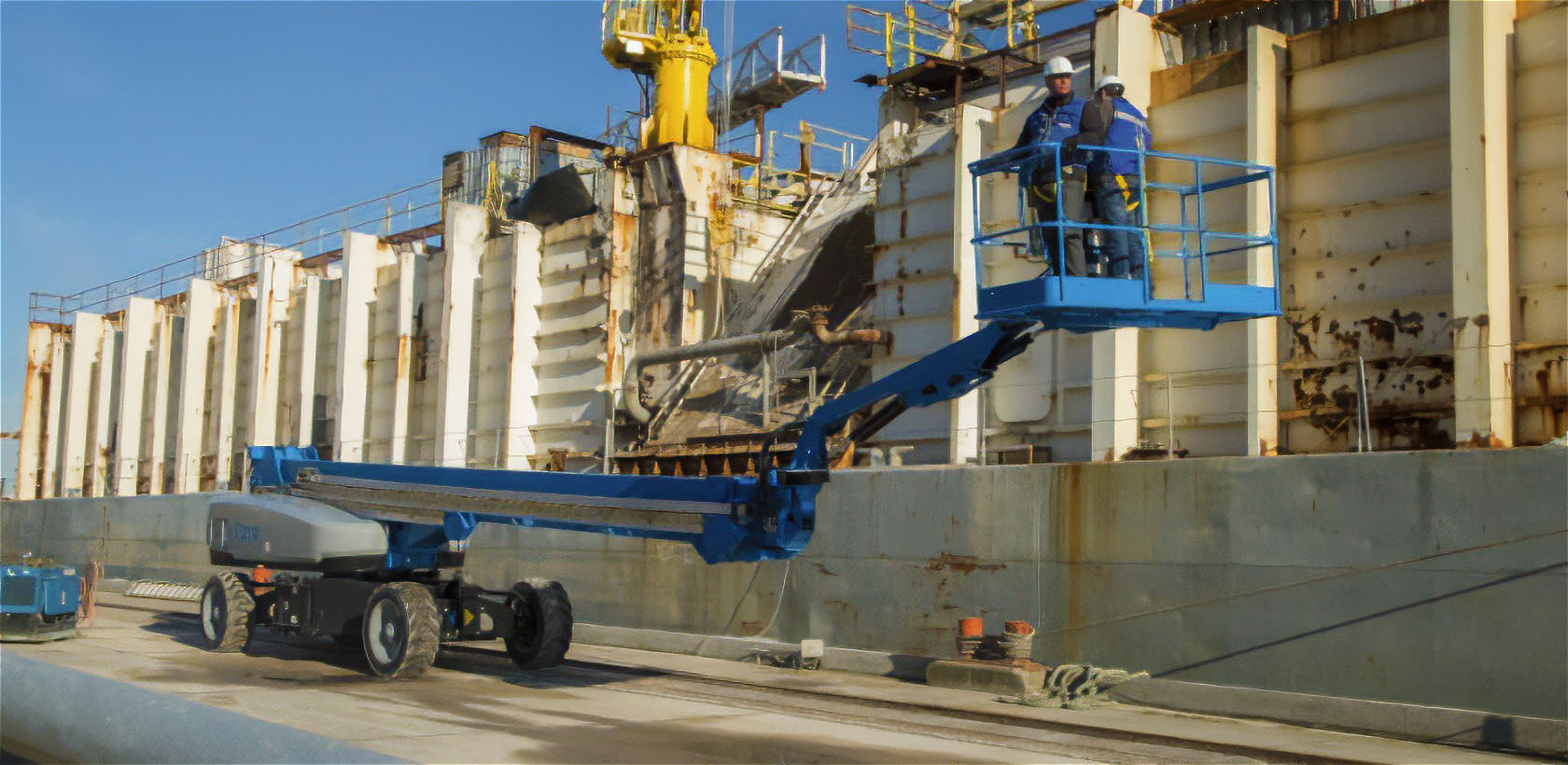When your team needs a lift for a task or project, often the most practical choice is to rent one. After all, lifts require regular maintenance and have very selective uses. However, any team using a lift that does not use lifts daily may not be well-versed in safety protocols. Not only does the operator of the lift and the team on the platform need to be extremely cautious, but so do any team members on the ground near the lift while it is operating. We’re continuing our previous article on lift safety with tips to keep your team safe while using a rented lift.
1) Keep Your Distance from Other Equipment
When operating the lift, keep it away from other equipment. Vehicular or handheld equipment can all pose hazards both for the driver and passengers. Lifts are sometimes clumsy to operate and must move slowly. They are meant to help workers get up to stationary tasks, one task or section at a time. Not only is fall safety a constant concern, but things falling from the lift can also create a hazard. It’s best to keep ten feet around the lift clear at all times, whenever possible.
2) Never Move an Extended Scissor Lift
Some aerial lifts are designed to move while extended. But scissor lifts are not. If you have rented a scissor lift, the most stable and easy to use type of lift for rent, you must not move it while the lift is extended. If you need to move the platform, retract the lift completely, then move the vehicle. Then re-stabilize the vehicle and raise the lift again. This is necessary for the safety and functionality of your scissor lift.
3) Don’t Hang Out Underneath the Lift
Items fall from lifts. This is a fact of worksites that experienced lift operators and teams have long-since learned. If your team is new, avoid the painful learning experience and take this tip: Don’t hang out underneath the lift. Don’t hang out near the edge of the lift. In general, watch out for falling objects that may have been kicked, rolled, or bounced off the edge of the lift. And wear hard-hats if you need to work underneath or near the people on the platform.
4) Use Guardrails as Intended for Occupant Safety
For those up on the lift platform, don’t monkey around the guardrails. Don’t climb on them or sit around them if you can help it. The guard rails are designed to support standing adults and prevent falls. If you use the guardrails in an unusual way, they cannot guaranteeably keep your team safe. Remain standing on the platform and use the platforms and guard rails as intended.
5) Wear a Fall-Safety Harness in the Lift
Finally, use fall-safety equipment to reduce the risk of falling from the lift. A harness and safety line can be essential in preventing falls and injuries. The equipment will also remind your team that they are at risk of falling and to move carefully both with their own safety and to prevent items from falling off the platform and endangering others.
Lift Safety is a Team Effort
It takes a team to safely operate a lift and complete lift-involved tasks. That means it also takes a team effort to keep your team safe while using a lift. The lift operators keep the lift passengers safe. The lift passengers keep your team safe below it. And the whole team ensures that the lift is operated according to best practices and safety procedures.
Here at Vandalia Rental, we are proud to provide lifts to both business and private customers and will help you prepare for safe lift-involved projects. Contact us today for more information on renting and using a lift for your next big project.


